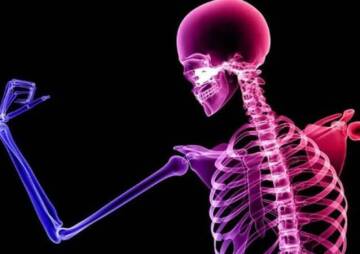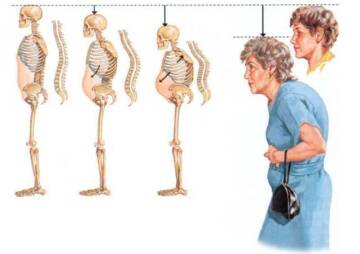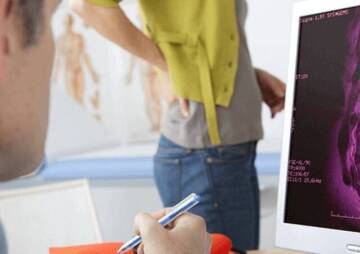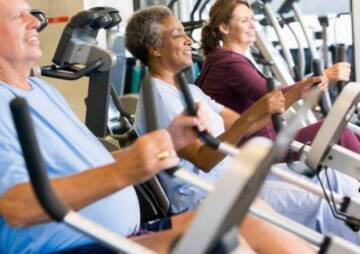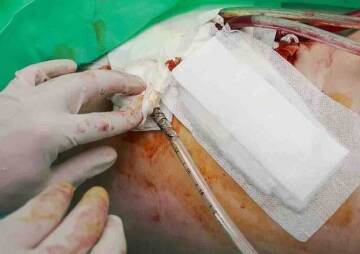-
kitengo
Craniomaxillofacial Surgery
Orthopedic Surgery
Spine Surgery
Orthopedic Implants
Hip Surgery
Knee Surgery
Pectus Excavatum
Bone Graft
Disinfectants
Healthcare
Different Types of Osteoporosis for Having a Less Painful Aging

Clinical diagnosis can determine whether this disease is primary or secondary. Because the treatments for primary and secondary osteoporosis are different, it is essential to know if osteoporosis is age-related or caused by another underlying disease to find the best treatment.
Did you know that there are different types of osteoporosis? Even though white women are most at risk for osteoporosis, the disease is non-discriminatory, and men, women, and children of all colors, skins, and races may develop osteoporosis.
Women in their 50s are more likely than men to experience rapid bone loss. Of course, men over the age of 60 have this process and develop osteoporosis at the same rate. According to reliable statistics, more than two million men currently have osteoporosis, and another 12 million are at risk without knowing it. One in four men over the age of 50 even has a broken bone due to osteoporosis; therefore, osteoporosis cannot be considered specific to women.
What is osteoporosis?
Osteoporosis involves a loss of bone mineral density, which leads to weak bones. This problem can start at different ages and for different reasons, and the type of treatment depends on the type of osteoporosis.

What is osteopenia?
Osteopenia is a condition in which the bones become thinner but not as severe as osteoporosis. Although a person with osteopenia does not yet have osteoporosis, s/he is very prone to osteoporosis.
How is the difference between osteopenia and osteoporosis determined?
The difference between osteopenia and osteoporosis is usually distinguished from the results of bone mineral density (BMD). The result of the BMD test is known as a T score, and the threshold for T scores is defined as follows:
- Negative one or higher: Normal bone density
- Less than a negative one and more than negative 2.5: Osteopenia
- Negative 2.5 and below: Osteoporosis

Types of osteoporosis
Osteoporosis is classified into primary, secondary, and rare.
Primary osteoporosis
Osteoporosis, which has no known cause and usually occurs through aging, is known as primary osteoporosis. With age, the process of bone resorption becomes faster than bone regeneration (bone formation). This imbalance leads to decreased bone mass and loss of structural integrity, causing the bones to become thin, weak, and prone to fractures. This type of osteoporosis is the most common and is divided into two types, one (I) and two (II).
Primary osteoporosis type one
Type one osteoporosis is more common in women. So, it is also known as menopausal osteoporosis. Type one osteoporosis usually develops gradually between the ages of 50 and 70, when estrogen's protective effects fade in women. This is especially true for white women and Asian women, especially women with small, delicate bones. Fractures of the wrist and spine are in this category.

Primary osteoporosis type two
Type two osteoporosis is also known as aging osteoporosis. This type of osteoporosis occurs after 70, and pelvic and spinal fractures are prevalent in this type.
Of course, there is some overlap between type one and type two osteoporosis.
Secondary osteoporosis
When osteoporosis develops due to a health condition or medical treatment, it is called secondary osteoporosis. A disease or drug can directly or indirectly affect bone metabolism, leading to decreased bone density and the risk of osteoporosis. These conditions can cause secondary osteoporosis: renal failure, celiac disease, irritable bowel syndrome, anorexia nervosa, gastric bypass surgery, leukemia, endocrine dysfunction, Cushing's syndrome, cystic fibrosis, diabetes, homocystinuria, which is a genetic metabolic disorder, such as hyperparathyroidism, hyperthyroidism, juvenile osteoarthritis, kidney disease, leukemia, malabsorption syndrome, and osteogenesis imperfecta, sometimes called brittle bone disease, including thyroid disease.

Collagen disorders that lead to too much or too little collagen production in the body that also lead to secondary osteoporosis are: Osteoporosis and Marfan syndrome, autoimmune disorders in which bone growth is reduced or abnormal, vitamin D deficiency, rheumatoid arthritis, ankylosing spondylitis, multiple sclerosis, and kidney disorders.
Medical treatments that can cause osteoporosis include corticosteroids such as prednisone, some breast cancer drugs, and Depro-Provera (Medroxyprogesterone).
Rare types of osteoporosis
Some types of osteoporosis are rare; however, knowing them can help us so much.
Pregnancy osteoporosis
Pregnancy-related osteoporosis is rare. In this case, a healthy woman suffers from unusual fractures due to decreased bone mineral density during pregnancy or shortly after delivery. Fractures associated with this type of osteoporosis have severe pain and usually occur in the spine or hip. Women with gestational osteoporosis recover completely. It is not clear why some women get osteoporosis during pregnancy.

Idiopathic
Idiopathic is a rare form of osteoporosis in children for which there is no known cause yet. This condition of osteoporosis usually occurs before puberty. Of course, during puberty, some bones are rebuilt, but their bones are still not as regular as the bone density of an adult. No matter what the cause, osteoporosis is a severe disease in children and adolescents. Everyone between the ages of 18 and 20 builds about 90 percent of their bone mass. Loss of bone mass during the peak years of ossification can put a child at serious risk for long-term complications such as persistent fractures.

Are the factors affecting osteoporosis genetic or environmental?
In most people, a combination of genetic and environmental factors leads to the development of osteoporosis (primary osteoporosis). In others, osteoporosis is caused directly by a disease or a drug (secondary osteoporosis).
Age is the most significant risk factor for osteoporosis in everyone. The risk of developing the disease usually increases after the age of 50. For women, decreased hormone levels after menopause increase the risk of osteoporosis. However, there are other factors involved.
Genetics
Osteoporosis is somewhat inherited in families. Studies have shown that genetics can affect bone mineral density (BMD) up to 75%. For this reason, it is better for people with a family history of osteoporosis to measure their bone density as soon as possible.

Half of the women and a quarter of men over the age of 50 have osteoporosis. The higher rate of osteoporosis in women is due in part to their finer ossification, which can also be traced back to their genetic background.
The race also affects the osteoporosis amount. Studies have shown that women of Asian and European descent develop osteoporosis at a higher rate than women of other races.
Environmental factors
Researchers have identified many environmental factors associated with osteoporosis.
Diet can be a significant factor in osteoporosis. Calcium and vitamin D are essential for building strong bones. People who do not get enough of these nutrients in their diet or do not get enough of them in early adulthood when building bone mass are at risk for osteoporosis.
A sedentary lifestyle in early adulthood can decrease peak bone mineral density and a higher risk of osteoporosis. Excessive smoking also reduces bone mass.
Researchers have shown a strong association between chronic and heavy drinking and reduced bone density measures. Caffeinated beverages are also thought to reduce calcium absorption and bone loss.
Oophorectomy (surgical removal of the ovary) causes menopause before the age of 45. With the removal of the uterus, the amount of estrogen decreases, reducing bone mineral density.
Girls and young women who are thin and over-exercised may experience delayed menstruation or even stop menstruating, called amenorrhea. When the menstrual cycle is not done correctly, the estrogen level in the blood decreases and leads to osteoporosis.

A low calcium diet and lack of nutrients that affect bone density also play an essential role in increasing osteoporosis in young women. For example, teenage girls who limit their eating to achieve their desired body size, young athletes who lose weight to run faster and dance better, and those who work professionally in sports such as gymnastics and skating are more likely to have irregular periods or do not even menstruate.
These young women and girls may be normal in appearance. However, they develop osteoporosis due to a disorder or lack of menstruation, and in many cases, their bone fractures are due to this osteoporosis. About 30% of ballet dancers suffer from their leg bones' recurrent fractures, mainly due to osteoporosis.
What are the symptoms of osteoporosis?
Osteoporosis itself has no noticeable pain or symptoms. Symptoms usually occur when the spine is unable to withstand the pressures of everyday life. For example, falling slowly or even lifting a bag of food from the trunk of a car. Sometimes the symptoms suddenly appear. For example, a person falls to the ground or throws all his weight on the spine while sitting or standing, and suddenly a fracture occurs, and the person feels pain. This type is called a "compression fracture." Advanced osteoporosis can lead to multiple compression fractures across the spine.

Fractures may be the first outward sign of osteoporosis. As a result of this fracture, a person gradually develops back pain and hump in the upper back. Sometimes, even due to multiple fractures in the vertebrae, a person's height shortens.
Other symptoms of osteoporosis include loss of mobility and instability during daily activities due to weak bones.
What can we do to prevent osteoporosis?
Exercise
Just like muscles, your bones need to work regularly to stay healthy. Studies show that young women who take part in track and field have the highest bone density. They also show that postmenopausal women who exercise regularly can prevent osteoporosis by about one percent a year.

Exercises recommended for osteoporosis patients include walking, jogging, tai chi, yoga, Pilates, tennis if possible, and leisurely dancing.
These exercises are suitable for patients with osteoporosis. However, they must consult with a doctor before starting a new exercise program and ensuring that they are safe. If a person already has a fracture, their exercise options are usually limited to prevent further injury.
Eat a healthy diet rich in calcium and vitamin D.
Adults (men and women) under the age of 50 need 1000 mg of calcium daily. All women over the age of 50 should receive 1,200 mg of calcium daily. Men aged 51 to 70 should receive 1,000 mg of calcium and 1,200 mg of calcium daily after 70.

If you have restrictions on dairy consumption, your doctor may recommend supplements or recommend using other calcium sources in your diet, including dark leafy vegetables (such as spinach, broccoli, and kale), and foods juices that are high in calcium.
Men and women under the age of 70 need 600 international units of vitamin D daily. This level increases to 800 IU of vitamin D after the age of 70.
How to treat osteoporosis?
There is no cure for osteoporosis, but there are many treatments to control the condition and help slow bone loss progressions, such as medications and hormone therapy. Early detection is critical in controlling osteoporosis.

Medications are only available with a doctor's prescription because before taking osteoporosis medication, other medications and medical issues must be checked to ensure that the prescribed medication does not pose any other risks to the patient. These drugs are usually prescribed when the patient has severe osteoporosis and is relatively likely to fracture. These include bisphosphonates (alendronate, zoledronic acid, Ibandronate, and Risedronate), thyroid, and parathyroid hormone therapy drugs (Calcitonin, Abaloparatide, and Teriparatide), and estrogen drugs.
What are the consequences of ignoring osteoporosis?
The earlier the disease is diagnosed, the more options there are to prevent the disease from developing. If osteoporosis is diagnosed early enough, doctors can keep the bones as healthy as possible.
A person with osteoporosis is very prone to bone fractures. People with severe osteoporosis can have fractures or fractures, even with a slight fall, or even gentle movements such as sprains or coughs can lead to fractures.
Bone fractures in patients with weak or brittle bones can also be life-threatening. Many patients (between 20 and 40%) with osteoporosis who develop a hip fracture die. A hip fracture is very painful and severely debilitating. Instead of breaking into large pieces, the bone breaks into smaller pieces due to the hollow. A broken bone is much more challenging to repair and heal.

Compression fractures in the spine are also a complication associated with osteoporosis. The vertebral discs in the spine may collapse, causing pain and a hump in your upper back. These factors reduce height due to compression of the trunk and abdomen. When the height is bent and short, the space required for cardio and respiratory activities is reduced, and sometimes respiratory, and heart problems occur for the person.
Result
Osteoporosis can occur for a variety of reasons—natural age-related changes in bone density cause primary osteoporosis. A disease or medication causes some cases of osteoporosis called secondary osteoporosis.
Clinical diagnosis can determine whether this disease is primary or secondary. Because the treatments for primary and secondary osteoporosis are different, it is essential to know if osteoporosis is age-related or caused by another underlying disease to find the best treatment
Category: orthopedic surgery
- vitambulisho osteoporosis
